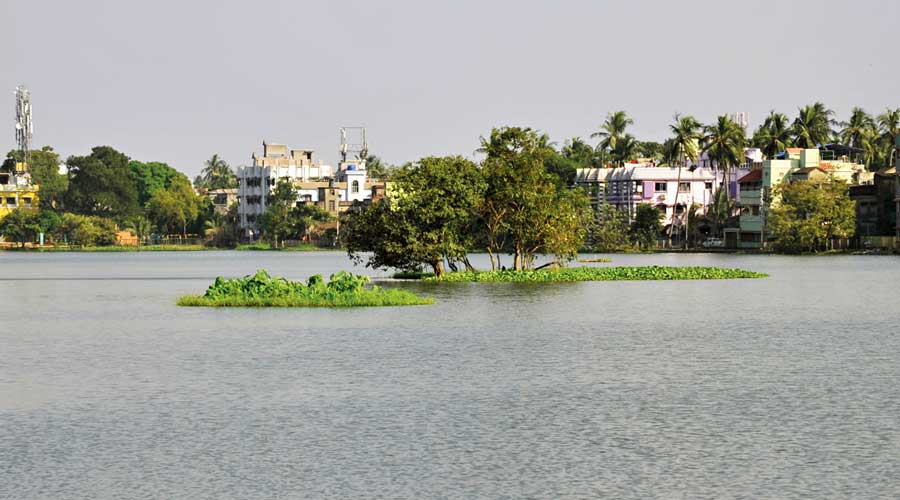The Santragachhi jheel, an abode of migratory birds, has become extremely polluted and is no longer fit to harbour any wildlife and fish, showed a recent West Bengal Pollution Control Board report.
The report, based on water samples collected on March 31, showed that all critical environmental parameters in the water body have surged past nationally permissible limits.
According to the report, the BOD (biochemical oxygen demand), a parameter of waste water and sewage pollution, was found to be 10.63mg per litre. The limit is 3mg.
The fecal colliform level was 20,000 per 100ml — 40 times the maximum permissible limit, which shows that domestic sewage has been continually entering the water body.
The dissolved oxygen level was found to be 3mg per litre. A minimum of 5mg is required to sustain aquatic animals.
“The status of key parameters show that the water body has turned significantly polluted. Forget bathing, it is not even fit to harbour wildlife, including fish,” said Arunabha Majumdar, a water pollution expert and former director-head, All India Institute of Hygiene and Public Health.
“The report shows how toxic the water body has become. I will take up the issue with the National Green Tribunal,” said environment activist Subhas Datta.
The study was conducted as per the NGT’s directive based on a public interest litigation on Santragachi jheel pollution filed by Datta.
“The report shows major deviations from the national water quality criteria. Unless rectified at the earliest, the consequences can be disastrous,” said a water pollution expert.
“The authority must submit an action plan for betterment of the lake water quality. This is undoubtedly a threatened ecosystem and required to be restored at all costs.”











